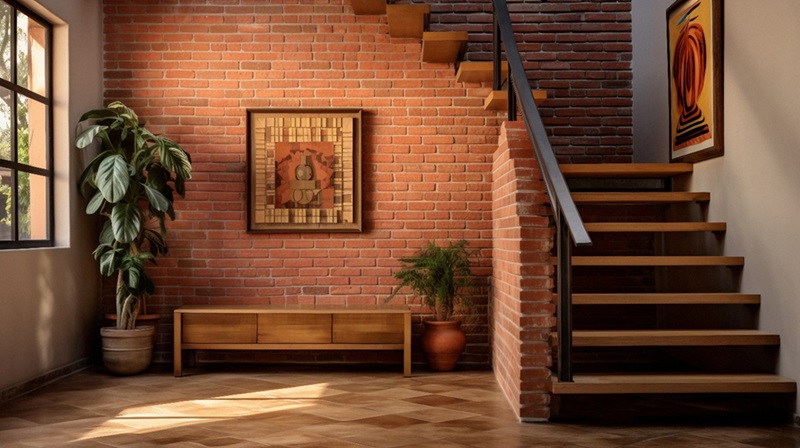Your Comprehensive Guide to Designing and Installing Custom Staircases

From humble steps aiding our mobility, the staircase has evolved to become more than just a functional element. It has transitioned into a vital aesthetic entity in home design – a canvas that allows homeowners to express their personal style. The staircase sets a tone for your home, often creating the first impression for visitors. Whether you favor a classic, old-world charm, a sleek, modern vibe, or a blend of both, staircases can be more than a path connecting two floors – they can be personal, detailed, and a reflection of who you are.
Delving into Design
From traditional styles that drip with elegance to sleek, clean-lined modern designs, staircases come in a variety of flavors. They can speak volubly of your design inclinations. Traditional designs lean towards finely detailed wooden balustrades crowned with elegant handrails. Those who prefer minimalism might find stainless steel custom stair staircases with simple, sleek balustrades appealing. Transitional designs, meanwhile, are perfect for homeowners who want the best of both worlds; they amalgamate elements from both traditional and contemporary aesthetics.
The material you choose for your staircase doesn’t only impact how it looks, but also its strength and durability. Wooden staircases promise a warm, classic look, while those crafted from glass continually exude a sophisticated, chic vibe. Steel designs, on the other hand, strike a balance between style and functionality, providing resistance to damage and decay, with minimal maintenance needs.
Your ultimate design choice hinges on several factors: available space, your home’s overall style, and your personal aesthetic tastes, to name a few. It’s prudent to work with an architect or interior designer who can help you in making an informed decision.
Understanding the Planning Process
The creation of a custom staircase begins with first-class planning. Interior designers and architects play a crucial role in orchestrating the vision and structuring your ideas. The planning considers numerous critical elements like space, safety, and aesthetics. The available space directly influences the staircase style – whether you can afford the grandeur of a sweeping staircase or need to settle for a compact spiral design.
Safety, especially for homes with children and the elderly, involves attention to details like the height of the railings, the depth of the steps, and the incline of the staircase. Aesthetics involves marrying the staircase design seamlessly with the home décor. In addition to these, state rules and regulations governing staircase design and installation also must be kept in mind while planning.
Taking the leap: Opting for a Custom Staircase
Custom staircases are an investment, but they offer numerous benefits. A one-of-a-kind staircase can infuse your home with a unique personality and serve as a stunning focal point. On the downside, a custom staircase might have a higher price tag attached to it. The creation process can also be time-consuming, taking anywhere from a few weeks to months, depending on the design complexity and material used.
An example of an amazing custom staircase is the ribbon staircase created by HSH architects for a home in Prague. Designed to be a centerpiece, the staircase is made from 10mm thick steel sheet and resembles a ribbon floating in mid-air. A staircase like this not only provides functionality but also serves as a work of art and conversation starter.

Process of Crafting a Custom Staircase
The creation of a custom staircase involves the harmonious collaboration of designers and craftsmen. Once the design is finalized, it is translated into a detailed drawing, followed by a 3D render to provide a realistic glimpse of the final product. After this, materials are sourced and selections are made.
Everything from the kind of wood to the type of screws used is meticulously chosen to ensure quality and coherence with the envisioned design. Highly specialized craftsmanship follows, involving detailing, cutting, bending, and assembly of different parts before they all come together to form your custom staircase.
Installation and Aftercare
Before installation, certain preparations are undertaken, like ensuring the stairway is structurally sound. It’s also important to protect the surrounding areas from dust or accidental damage during installation. As for the process, expect the unexpected – installation is a precise task requiring skilled workmanship and patience.
Your custom staircase is not something you replace frequently, so proper care must be taken to maintain its aesthetics and functionality. Regular cleaning and dusting, periodically checking for wear and tear, and sometimes, re-polishing or painting, would keep your staircase in top shape.
Conclusion
The installation of a custom staircase can dramatically alter the feel of your home whilst adding an element of personal style. Though it requires careful planning and considerable investment, the result can be profoundly pleasing. So consider your choices and let your staircase convey your creative touch; after all, it’s more than just a pathway between two floors. It’s a canvas for self-expression. Let it tell your story.